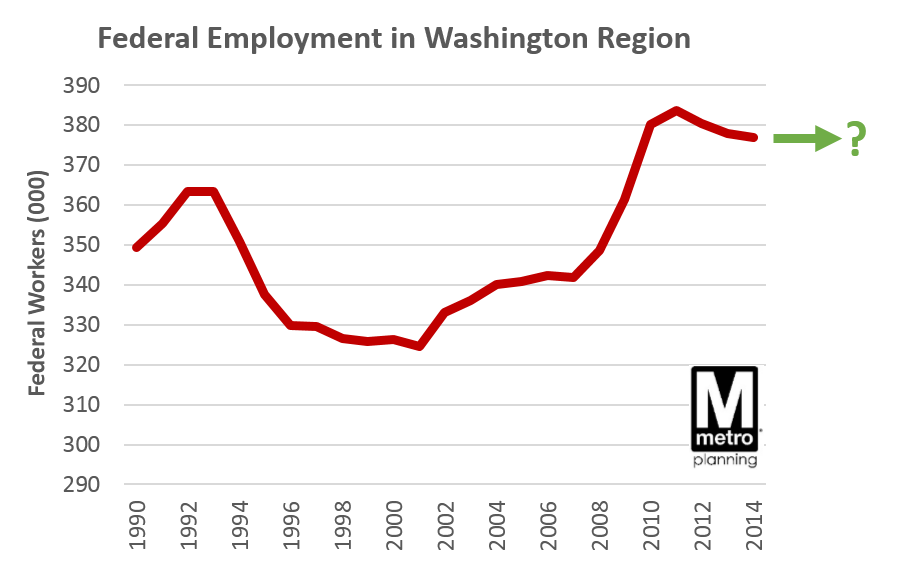Four Key Questions about Metro’s Future with the Federal Worker (5 of 5)
The answers to these four questions will shape the future of Metro’s federal customers, and the region’s transportation future. (Fifth and last in a series of posts on Metro’s Federal customers – see posts 1, 2, 3, and 4)

The ATF headquarters adjacent to NoMa Metrorail station has helped grow ridership there significantly.
1. Will the transit benefit be restored to parity with parking? When Congress cut the transit benefit in half, it hurt Metro riders hard. 42% of Metro’s ridership – around 500,000 rail and bus trips per day – comes from riders who use the Federal Transit Benefit, including private-sector workers. At Metro, 22% of all ridership comes from commuters who spend over $130 per month on transit. Following the changes to the SmartBenefits program, Metro saw ridership losses concentrated on these riders hit the hardest, and federal employees overwhelmingly pay with SmartBenefits.
If Congress restores the maximum transit benefit to parity with parking, it would be a huge boon to Metro’s federal customers and Metro’s bottom line.
2. Will GSA locate more federal facilities within walking distance of Metrorail? As federal facilities are built and relocated in our region, their close proximity to Metrorail will have a huge impact on Metrorail ridership. We know that changes to federal office buildings and research centers within walking distance (a half-mile or less) to Metrorail explain the majority of changes in ridership from Federal workers at Metro stations in the past decade. We also know that locating the same facility at certain stations can produce higher rail ridership than at other stations. In the future, more federal facilities within easy walking distance to Metrorail will result in more ridership.
3. Will telework continue to grow? Many federal workers, with support from OPM and GSA, are increasingly turning to telework. In 2013 the number of federal workers teleworking grew by 24% year over year, and the number of workers eligible for telework is growing even faster. Telework erodes the number of trips recorded on Metro as riders commute less frequently. The question for the future of Metro’s federal customer base is, will telework by federal commuters keep growing?
 4. How far will federal employment fall from its 2011 peak ? Federal employees in the Washington region grew between 2000 and 2011, in part due to the economic stimulus (American Recovery and Reinvestment Act of 2009), and has begun to decline since that peak. (Chart at left based on data from Moody’s Analytics.) As Metro and the region look to 2016 and beyond, will the base of federal employment stabilize? Or continue to fall?
4. How far will federal employment fall from its 2011 peak ? Federal employees in the Washington region grew between 2000 and 2011, in part due to the economic stimulus (American Recovery and Reinvestment Act of 2009), and has begun to decline since that peak. (Chart at left based on data from Moody’s Analytics.) As Metro and the region look to 2016 and beyond, will the base of federal employment stabilize? Or continue to fall?


Recent Comments